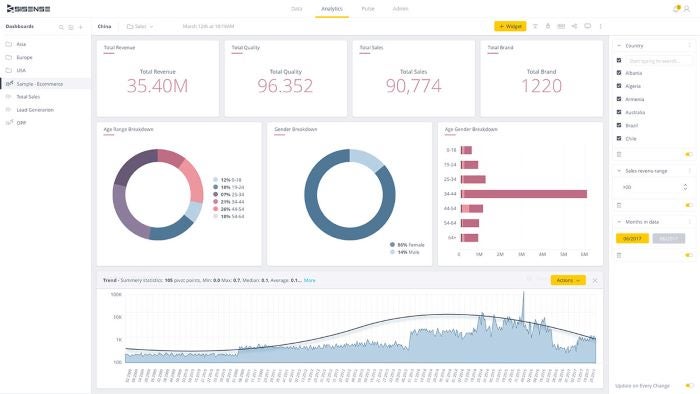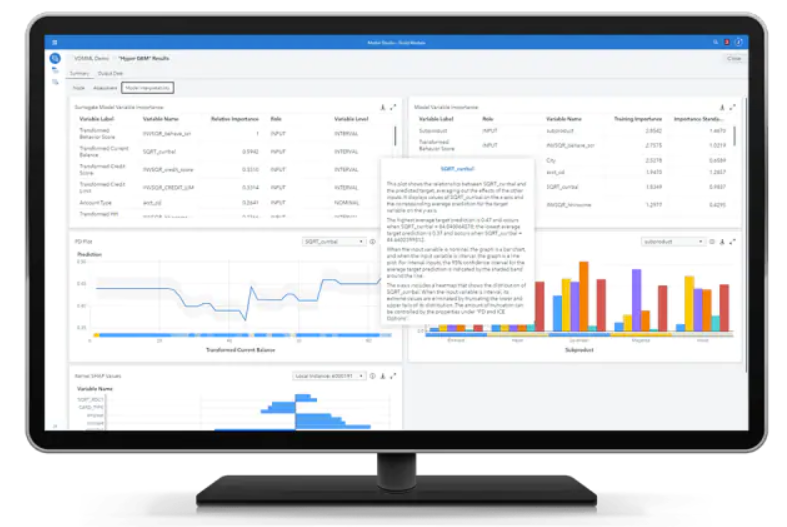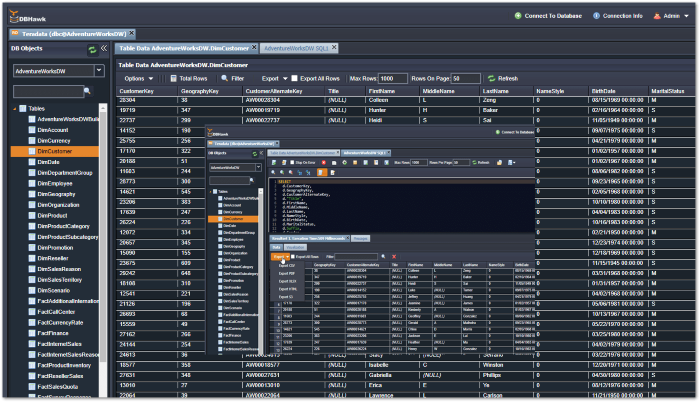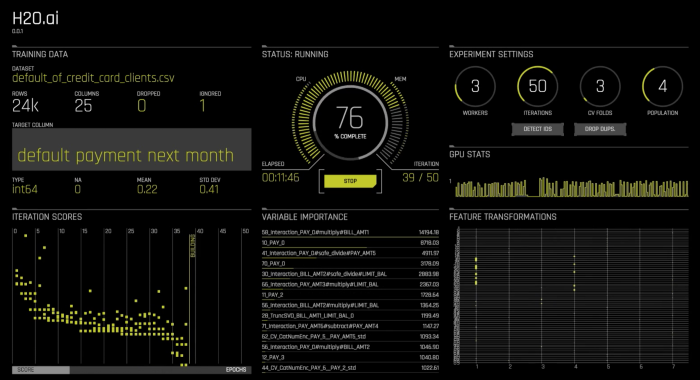In 2020, people as a whole generated 2.5 quintillion data bytes every day. While not all of those are collected by businesses, a large portion of them are, leaving an insane amount of data that companies have to comb through to get actionable insights. Due to the sheer volume of data organizations intake, data mining is becoming big business as these organizations look to make smarter, better-informed decisions. If you need to implement data mining software in your business, this guide can help you choose the right tools.
Data Mining Tools Overview
- What is Data Mining?
- What are Data Mining Tools?
- Top Data Mining Tools
- RapidMiner
- Oracle Data Miner
- Sisense
- Alteryx APA
- SAS Data Mining
- Teradata
- Dundas BI
- H2O
- Data Mining Leads to Actionable Insights
What is Data Mining?
Back to top
Data mining is the process of pulling information from large datasets in order to find patterns or trends that can inform future decisions. Organizations can also use it to highlight anomalies and attempt to identify the root cause of issues. How does data mining work? Typically, it uses artificial intelligence (AI), machine learning (ML), and statistical models to identify relevant information. Data mining is a big part of business intelligence, which helps companies cut costs, improve relationships with their customers, and increase revenue.
What are Data Mining Tools?
Back to top
Data mining tools are software solutions that use AI and ML to pull and analyze data, highlight trends, and provide actionable insights for businesses. The software can refine information from both structured and unstructured datasets, so organizations can make predictions and understand relationships between different parts of their business. Data mining tools allow businesses to address questions that would take too much time to answer if they had to analyze data by hand.
Also Read: 6 Ways Your Business Can Benefit from DataOps
Top Data Mining Tools
Back to top
The following data mining tools all have good user reviews and healthy feature sets.
RapidMiner
RapidMiner offers automated data mining and modeling tools with AI and ML to provide clear visualizations and predictive analytics. The drag-and-drop interface makes it easier for analysts to create predictive models, and the library includes over 1,500 pre-built algorithms, meaning there’s a model for nearly any use case. There are also pre-built templates for common scenarios, including fraud detection and maintenance, to lower the time analysts have to spend building the models. RapidMiner can connect to any data source, or users can import data from Excel. Interested parties must request pricing from RapidMiner; it’s not available on the website.
Key Features
- Point-and-click database connections
- Drag-and-drop model builder
- MySQL, PostgreSQL, and Google BigQuery support
- Out-of-the-box algorithms and templates
- Multiple types of charts and graphs
- Automated machine learning
- R and Python support
Pros
- Direct connections to external data sources
- Easy to automate entire machine learning process
- Helpful and responsive customer service
Cons
- Some users said the web application for AI Hub doesn’t have much functionality
- The cost is higher compared to competitor platforms
Oracle Data Miner

Oracle Data Miner is an extension of the Oracle SQL Developer that helps analysts quickly build a variety of machine learning models, apply them to new data, and compare the models for actionable insights. It offers a drag-and-drop editor, allowing both data scientists and regular users to get answers to their data-related questions. The workflow API makes it easier to deploy the model throughout the business, embedding analytics into the applications where analysts are already working. Pricing is not clearly available on the website, so businesses will have to contact Oracle for more information.
Key Features
- Drag-and-drop model builder
- Interactive workflow tool
- Multiple types of visualizations
- Integration with open-source R
- Automated model building
- Works with BigDataSQL to access major data sources
Pros
- Can ingest both structured and unstructured data
- Easy to obtain and restructure data
- Platform is organized and provides easy data management
Cons
- The interface may not be as user-friendly as other platforms
- Some users complained the processing was slow
Sisense

Sisense is data analytics software that allows users to embed analytics into the platforms they already work in, putting the information in the same place they’re making decisions. Additionally, businesses can white label the embedded analytics, so they can also push them out to their customers. With live data connections, businesses can get real-time insights and a strong self-service platform. With code-first, low-code, and no-code options available, analysts of any skill level can get their data questions answered and build helpful models. Plus, the AI allows analysts to type in a question, and then it guides them through the investigation. Pricing is not available on the website.
Key Features:
- Predictive analytics
- Code-first, low-code, and no-code tools
- Self-service analytics
- Live data connections
- Embedded analytics
- Cloud-based options
Pros
- Provides deep insights into data
- Easy to use and create dashboards and queries
- Quickly connects to databases and processes data
Cons
- Doesn’t always save queries users are working on
- Reports don’t always update in the timeline users set
Alteryx APA

Alteryx APA offers automated analytics with machine learning across the entire process, including mining, modeling, and visualization. There are over 80 natively-integrated data sources that users can pull from, including Oracle, Amazon, and Salesforce, or they can use APIs to connect to others. Analysts can also add maps to their visualizations to highlight geographic trends. Alteryx offers step-by-step guides to help analysts of any skill level build models without coding. However, expert data analysts can also use R-based models. Pricing information is not available on the website.
Key Features
- Automated analytics
- Native data source integrations & APIs
- Geographic analytics
- No-code options
- Multiple visualization options
- Sharing and exporting capabilities
Pros
- Reliable and efficient infrastructure
- Supports processes of all sizes and levels of complexity
- More user-friendly than similar platforms
Cons
- Big data sources sometimes take a long time to process
- Doesn’t include as many visual tools as competitors
SAS Data Mining

SAS Data Mining helps organizations answer complex questions with analytics through automated modeling and a collaborative platform. With natural language generation, the platform can create a post-project summary, detailing important trends, outliers, and insights. Then, users can add notes to the report to make communication and collaboration easier. SAS Data Mining supports a variety of coding options, so analysts can create or adjust algorithms in their language of choice. Data scientists can also combine structured and unstructured data in models to get as much information as possible. Pricing is not available on the SAS website.
Key Features
- Drag-and-drop interface
- Code-first and no-code options available
- PDF sharing
- Collaborative environment
- Public API
- Automatic modeling
- Natural language processing
Pros
- Helpful and responsive customer service
- Easy to integrate data
- Large number of algorithms available
Cons
- Some users complained that the platform wasn’t updated very often
- Difficult to determine best practices for the tool
Teradata

Teradata is a data mining tool built for organizations using multi-cloud deployments, providing access to all databases, data lakes, and external SaaS applications. No-code options allow users from any business department to get answers to their questions to make more informed decisions. Organizations can deploy Teradata on any of the major public cloud platforms, including AWS, Azure, and Google, as well as in private clouds or on-premises. Teradata doesn’t charge upfront costs, instead offering a pay-as-you-go model. A pricing calculator is available on the website to help users estimate their costs.
Key Features
- Code-first and no-code options
- Scalable workloads
- Multiple deployment options
- Integrates with a variety of sources
- Support for all common data types and formats
- Role-based analytics options
Pros
- Consolidates data from all sources
- Handles sophisticated and simple queries
- Requires very little maintenance for the cloud-based options
Cons
- Can be expensive compared to competitor platforms
- On-premises maintenance can be difficult and time consuming
Dundas BI

Dundas BI is a data analytics platform that offers real-time insights and visually-appealing reports and dashboards. It can consolidate data from any source with open APIs, ensuring that users have all the information they need to create effective models. Users can create content that’s easy to understand with minimal input from IT. Interactive dashboards allow analysts to edit models to see how different variables would impact the business. Dundas BI offers a lot of out-of-the-box functionality without requiring add-ons or upgrades. Pricing information is not available on the website.
Key Features
- Customizable dashboards
- Open APIs
- Drag-and-drop design tools
- Multiple visualization options
- Communication and collaboration tools
- Automated notifications
- What-if analytics
Pros
- Feature-rich platform
- Competitively priced compared to similar platforms
- Works equally well on mobile devices and desktops
Cons
- Can have a steep learning curve
- Some users complained about the platform crashing
H2O

H2O is an AI cloud built for data mining to improve the insights businesses get from their data and their decision making. Automated machine learning solves complex problems while providing results in an easy-to-understand format. Analysts can train and deploy the AI in any environment, and there are several different modeling types that they can choose from. Real-time data analysis provides accurate predictions and fast insights to help businesses make quicker decisions and improve their scalability. H2O can be deployed with either hybrid or fully managed options. The platform is open-source and free to use, but businesses can pay for enterprise support and management.
Key Features
- Open-source platform
- Powerful AI algorithms
- Support for multiple programming languages, including R and Python
- Automatic tuning and training of ML
- In-memory processing
- Easy deployment
Pros
- Improves model accuracy and performance
- Easy to pick up and learn how to use
- Provides hands-on coaching
Cons
- Some users want more granular control
- No support for edge computing
Data Mining Leads to Actionable Insights
Back to top
Companies that use data mining software get faster access to important information and actionable insights that can improve their decision-making process. Each day, businesses take in so much data that it would be impossible to sort through manually. They need data mining tools that include AI to run what-if scenarios and get accurate forecasts. Businesses looking for the best data mining software for their business should take advantage of free trials and read user reviews to determine which one will work best for their team.
Read Next: Attention CIOs: Many Will Fail the Data Science Game
The post Top Data Mining Tools for Enterprise 2022 appeared first on IT Business Edge.














